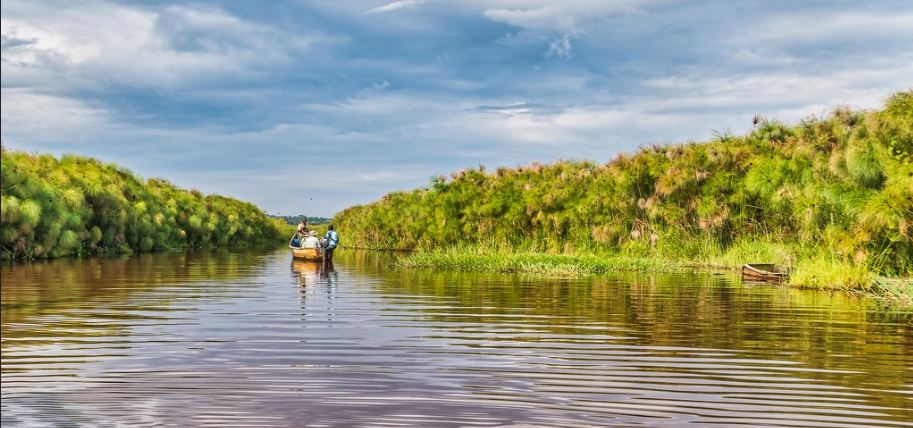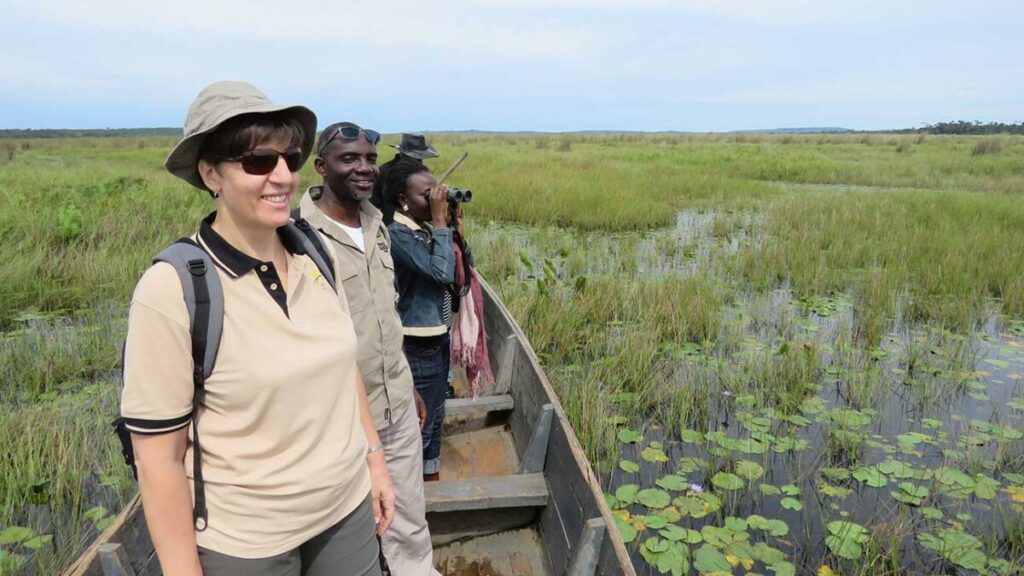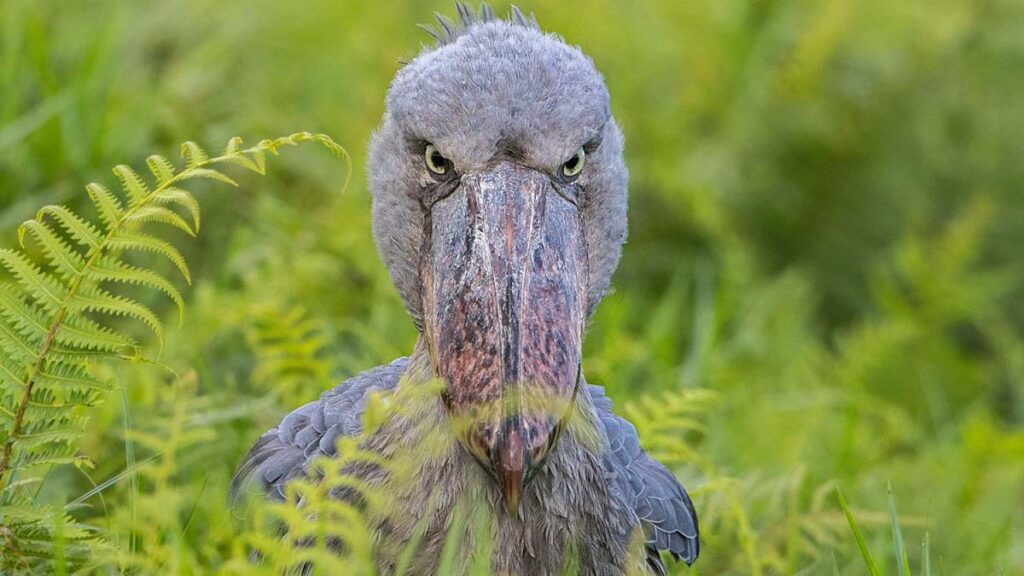Imagine gliding through a papyrus maze, a symphony of birdsong your soundtrack. Suddenly, a prehistoric-looking creature emerges, its massive shoe-shaped bill a dead giveaway. This is the Shoebill, a living fossil stalking the lush depths of Uganda’s Mabamba Swamp.
A Bird Out of Time
Nicknamed the “Shoebilled Stork,” this endangered bird stands tall, its grey plumage contrasting with the vibrant green swamp. Its most striking feature? A colossal, hooked bill, perfectly adapted for spearing lungfish, its favorite meal. With each patient step and watchful stare, the Shoebill embodies an era long gone, a chance to witness the magic of natural history.
Known for its distinctive appearance and prehistoric demeanor, the shoebill is often regarded as a living relic, offering a glimpse into the distant past of avian evolution. Standing at over four feet tall with a wingspan of up to eight feet, this magnificent bird commands attention with its stoic presence and unmistakable “shoe-shaped” bill, from which it derives its name.
Mabamba: A Birder’s Paradise
The Shoebill is the crown jewel of Mabamba Swamp, a 16,500-hectare wetland designated as an Important Bird Area. Here, over 300 bird species flit through the papyrus reeds. Watch out for the African marsh harrier soaring overhead, or the iridescent flash of a glossy ibis. A skilled guide will navigate the labyrinthine waterways, maximizing your chances of encountering a Shoebill in its natural habitat.
Located on the shores of Lake Victoria, Mabamba Swamp is a sprawling wetland spanning approximately 30 square kilometers. Its labyrinth of channels, papyrus reeds, and open water create an ideal habitat for a diverse array of flora and fauna. Designated as a Ramsar site, Mabamba Swamp holds immense ecological significance, serving as a crucial breeding ground and sanctuary for numerous bird species.

More Than Just a Bird
A trip to Mabamba is about more than just ticking a bird off your life list. It’s about supporting conservation efforts. Local communities have become stewards of the Shoebill, transforming from hunters to guides. Witnessing their dedication firsthand adds another layer to this unforgettable experience.
Habitat and Behavior
Within the tranquil confines of Mabamba Swamp, the shoebill leads a solitary existence, favoring secluded marshy areas and shallow waters dotted with floating vegetation. Its diet primarily consists of fish, frogs, and even small reptiles, which it captures with swift and precise movements of its formidable bill. Despite its imposing stature, the shoebill is a master of stealth, often remaining motionless for extended periods before striking with lightning speed to secure its prey.
Conservation Status and Threats
While the shoebill’s presence in Mabamba Swamp serves as a testament to the wetland’s ecological health, this iconic species faces numerous threats in the wild. Habitat loss due to human encroachment, pollution, and the illegal wildlife trade pose significant challenges to its long-term survival. Additionally, the shoebill’s slow reproductive rate and limited distribution make it particularly vulnerable to external pressures.

Conservation Efforts and Ecotourism
In response to these threats, concerted efforts have been made to conserve the shoebill and its habitat within Mabamba Swamp. Local conservation organizations, in collaboration with government agencies and international partners, have implemented various initiatives aimed at protecting critical wetland ecosystems and raising awareness about the importance of biodiversity conservation. Furthermore, ecotourism has emerged as a sustainable means of generating income for local communities while promoting the conservation of flagship species like the shoebill. Guided birdwatching tours and community-led initiatives offer visitors the opportunity to experience the natural wonders of Mabamba Swamp while contributing to its preservation.
Conclusion
In the heart of Uganda’s Mabamba Swamp, the shoebill stands as a symbol of resilience and natural beauty. Its presence serves as a reminder of the intrinsic value of wetland ecosystems and the urgent need to protect them for future generations. Through collaborative conservation efforts and responsible tourism practices, we can ensure that this majestic bird continues to thrive in its natural habitat, enriching the lives of all who encounter it.
As visitors embark on a journey into the depths of Mabamba Swamp, they are not only treated to a spectacle of avian grandeur but also become stewards of a fragile ecosystem teeming with life. In the timeless dance of nature, the shoebill reigns supreme, a silent sentinel of the wetlands, inspiring awe and admiration in all who behold its majestic form.
Imagine capturing the perfect photo of a Shoebill poised for its next catch. Picture the thrill of navigating the swamp’s hidden corners, each bend revealing a new avian wonder. This is the magic of a Mabamba safari. Don’t miss this chance to encounter a living fossil and explore a vibrant ecosystem teeming with life. Book your safari today and embark on an unforgettable adventure into a timeless world. Contact us at [email protected] to plan your dream safari.

